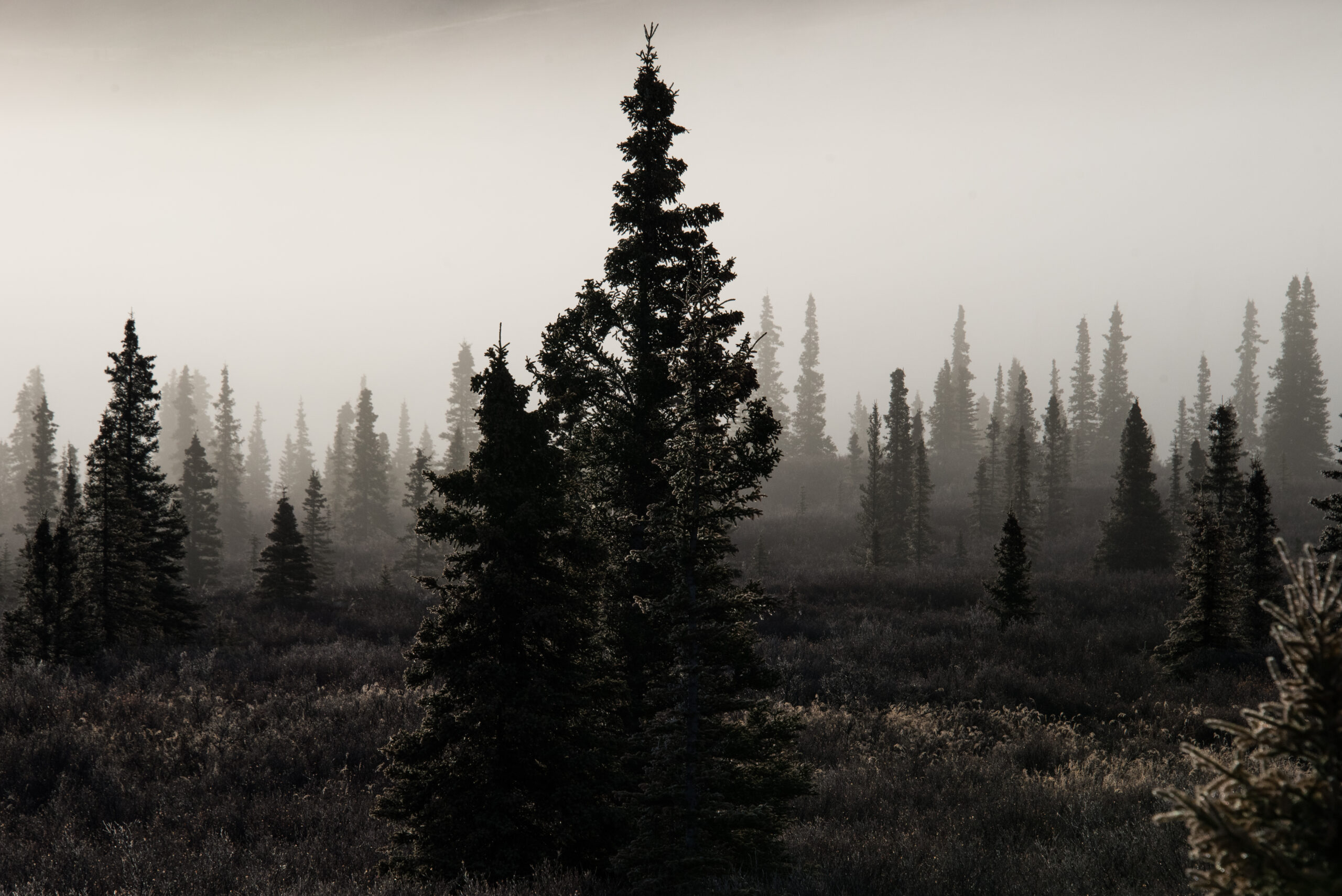
Northern ecosystems are seeing some of the planet’s most sweeping changes from climate warming. For some animals and plants, that has posed a threat to their very existence and, for humans, a couple complicated questions: Can we — and should we — do anything to save them?
In Alaska, one area where land managers and ecologists are wrestling with those questions is the boreal forest, home to spruce and birch trees, wetlands and many species of animals. But the boreal is warming more rapidly than anywhere on Earth and seeing more intense wildfires, invasive beetles decimating wide swaths and changing rainfall patterns that’ve caused some parts to shift to grasslands.
A story in the spring issue of the Virginia Quarterly Review by reporter Lois Parshley, in collaboration with the climate-focused magazine Grist, explores these issues of whether and when humans should accept, resist or direct climate change’s impacts.
And, Parshley says, there’s a lot at stake in the boreal forest.
Listen:
[Sign up for Alaska Public Media’s daily newsletter to get our top stories delivered to your inbox.]
This interview has been lightly edited for length and clarity.
Lois Parshley: The boreal forest is one of the world’s largest biomes. And it is filled with both trees and birds and many other different kinds of species that you can think about like pieces of a biological puzzle. The forest itself encompasses about a third of the world’s forests, but it also holds a lot of freshwater. When trees draw water up from the soil and into their needles, it can billow out as vapor when the needle pores open in the sun. And this is a process called transpiration. And it actually helps the boreal forest make its own rain. And collectively, these kinds of exhalations also make the boreal a really important worldwide source of oxygen. Some scientists even think it might change the planet’s air circulation.
Casey Grove: As climate change progresses and the planet gets warmer and warmer, what are we seeing happen to the boreal forest in Alaska?
LP: So spruce trees are, in a lot of ways, made to burn. Their seeds are released after wildfires. But we’re seeing fires come back too quickly, while trees are too young to produce cones. And in many places, black spruce is now being replaced by trees like aspen and birch. And all of these trees are simultaneously confronting insects and new diseases. So in some places, trees aren’t re-growing at all. The landscape is actually in the process of converting to grassland. You might have seen these changes if you’ve driven the Parks Highway recently, around Cantwell, many spruce trees have died off and you can see them now standing dead on on either side of the highway.
CG: One thing I thought was interesting about your story, I got a sense that it was less about, you know, maybe we need to change what we’re doing to stop it and more about just kind of acknowledging what’s actually happening out there. Am I on the right track there?
LP: Yeah, so wildlife managers are increasingly acknowledging that we’ve reached a point where, in some places, there’s simply no way to keep conditions as they were. And they’re now asking some pretty big questions about how much we should intervene. You know, it sounds deceptively simple, but is climate change something to be resisted, accepted, or directed? And these are terms that the National Park Service, for example, are using to try to make more realistic conservation goals. So accepting climate change in this instance might mean that we’re accepting that spruce trees might not regrow after wildfires. Or directing that kind of change might mean introducing bison to the Kenai National Wildlife Refuge to try and help make new grasslands healthier. So across the country, scientists are now asking these kinds of questions and considering introducing species to new habitats where they’d never been previously, in order to help them try to avoid extinction.
CG: I mean, if if we lose the boreal forest or it’s significantly reduced, what’s at stake there?
LP: Yeah, I think one of the most helpful answers I heard to that question in my interviews was talking to Jill Johnstone. She is a researcher who’s been working with the boreal forest for many years. And she told me that she sees its recent transformations like a big ship changing its course. It happens very gradually at first, and then you never really see the consequences further as time goes on. And her perspective was that there’s very little that can truly devastate an ecosystem. But those changes might not always be in a direction that we like. The forest itself maybe will just convert to grassland, and that’s something that will just happen. The value judgment about whether that’s a good or a bad thing comes from from us.
CG: Yeah, I think that was the thing that resonated for me in that story was it was like, “climate change beyond good and evil” or something like that, you know, that, like you said, like the value judgment placed on that change or what you get after that change is sort of on us.
LP: Yeah, I think it’s important to distinguish there what we’re saying when we say “value judgment,” because, certainly to species that are depending on those ecosystems being spruce trees, those species aren’t going to do well. Humans have always had a significant impact on the environments they inhabit. But that has looked different ways throughout the course of human history. And in this moment, where we’re seeing rapid change, seems like a really good time to be asking questions about the landscapes we live in and their relationships and our impact on both of those things.
Casey Grove is host of Alaska News Nightly, a general assignment reporter and an editor at Alaska Public Media. Reach him at cgrove@alaskapublic.org. Read more about Casey here.





